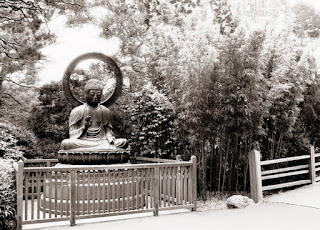When you see a scene that appeals to you you make the photograph. But sometimes you look at the print or the image on you screen and it doesn't look like what you remember or you see the scene as you first did but the friends you are showing it to don't see it the same way, they don't see what you were seeing when you made the image.
These are clues that the final image contains more information than it needs to convey the true message of the "Image" as you perceived it.
Take a look at the overall composition and ask yourself, "Where is the image in this? What was I seeing that attracted me to this?"
Often you will find that the real image is only a part of the composition and the solution is getting closer to the real subject of the image or choosing another lens or focal length when photographing, or actually cropping the image in post processing.
Here's how I deal with this situation…when I'm out shooting. Recently while photographing in the Japanese Tea Garden in Golden Gate Park I came up to this statue of a Buddha. I've photographed this statue many times, but I've never been satisfied with the images I've come away with. This day I took more time to work with it and figure out what really attracted me visually to statue.
I made this frame of the statue and its environment, but I knew this wasn't a defining image.
I moved closer looking through the view finder and the 28mm lens. I stood back and switched to a 55mm lens and made this, the second image. Looking at the statue from this perspective I realized that it was the gesture of the Buddha's hand that attracted me most.
This whole process took much less time than has taken to explain it. The most time consuming part of making the image was the one lens change. Finding the image and making the final frame took only seconds. This is what comes with practice and making photography a practice.
Photos: ©2012 David W. Sumner





No comments:
Post a Comment